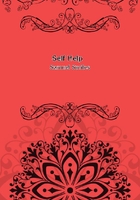
第36章
It was a maxim of Dr. Young, the philosopher, that "Any man can do what any other man has done;" and it is unquestionable that he himself never recoiled from any trials to which he determined to subject himself. It is related of him, that the first time he mounted a horse, he was in company with the grandson of Mr. Barclay of Ury, the well-known sportsman; when the horseman who preceded them leapt a high fence. Young wished to imitate him, but fell off his horse in the attempt. Without saying a word, he remounted, made a second effort, and was again unsuccessful, but this time he was not thrown further than on to the horse's neck, to which he clung. At the third trial, he succeeded, and cleared the fence.
The story of Timour the Tartar learning a lesson of perseverance under adversity from the spider is well known. Not less interesting is the anecdote of Audubon, the American ornithologist, as related by himself: "An accident," he says, "which happened to two hundred of my original drawings, nearly put a stop to my researches in ornithology. I shall relate it, merely to show how far enthusiasm - for by no other name can I call my perseverance -may enable the preserver of nature to surmount the most disheartening difficulties. I left the village of Henderson, in Kentucky, situated on the banks of the Ohio, where I resided for several years, to proceed to Philadelphia on business. I looked to my drawings before my departure, placed them carefully in a wooden box, and gave them in charge of a relative, with injunctions to see that no injury should happen to them. My absence was of several months; and when I returned, after having enjoyed the pleasures of home for a few days, I inquired after my box, and what I was pleased to call my treasure. The box was produced and opened; but reader, feel for me - a pair of Norway rats had taken possession of the whole, and reared a young family among the gnawed bits of paper, which, but a month previous, represented nearly a thousand inhabitants of air! The burning beat which instantly rushed through my brain was too great to be endured without affecting my whole nervous system. I slept for several nights, and the days passed like days of oblivion - until the animal powers being recalled into action through the strength of my constitution, Itook up my gun, my notebook, and my pencils, and went forth to the woods as gaily as if nothing had happened. I felt pleased that Imight now make better drawings than before; and, ere a period not exceeding three years had elapsed, my portfolio was again filled."The accidental destruction of Sir Isaac Newton's papers, by his little dog 'Diamond' upsetting a lighted taper upon his desk, by which the elaborate calculations of many years were in a moment destroyed, is a well-known anecdote, and need not be repeated: it is said that the loss caused the philosopher such profound grief that it seriously injured his health, and impaired his understanding. An accident of a somewhat similar kind happened to the MS. of Mr. Carlyle's first volume of his 'French Revolution.'
He had lent the MS. to a literary neighbour to peruse. By some mischance, it had been left lying on the parlour floor, and become forgotten. Weeks ran on, and the historian sent for his work, the printers being loud for "copy." Inquiries were made, and it was found that the maid-of-all-work, finding what she conceived to be a bundle of waste paper on the floor, had used it to light the kitchen and parlour fires with! Such was the answer returned to Mr. Carlyle; and his feelings may be imagined. There was, however, no help for him but to set resolutely to work to re-write the book;and he turned to and did it. He had no draft, and was compelled to rake up from his memory facts, ideas, and expressions, which had been long since dismissed. The composition of the book in the first instance had been a work of pleasure; the re-writing of it a second time was one of pain and anguish almost beyond belief. That he persevered and finished the volume under such circumstances, affords an instance of determination of purpose which has seldom been surpassed.
The lives of eminent inventors are eminently illustrative of the same quality of perseverance. George Stephenson, when addressing young men, was accustomed to sum up his best advice to them, in the words, "Do as I have done - persevere." He had worked at the improvement of his locomotive for some fifteen years before achieving his decisive victory at Rainhill; and Watt was engaged for some thirty years upon the condensing-engine before he brought it to perfection. But there are equally striking illustrations of perseverance to be found in every other branch of science, art, and industry. Perhaps one of the most interesting is that connected with the disentombment of the Nineveh marbles, and the discovery of the long-lost cuneiform or arrow-headed character in which the inscriptions on them are written - a kind of writing which had been lost to the world since the period of the Macedonian conquest of Persia.